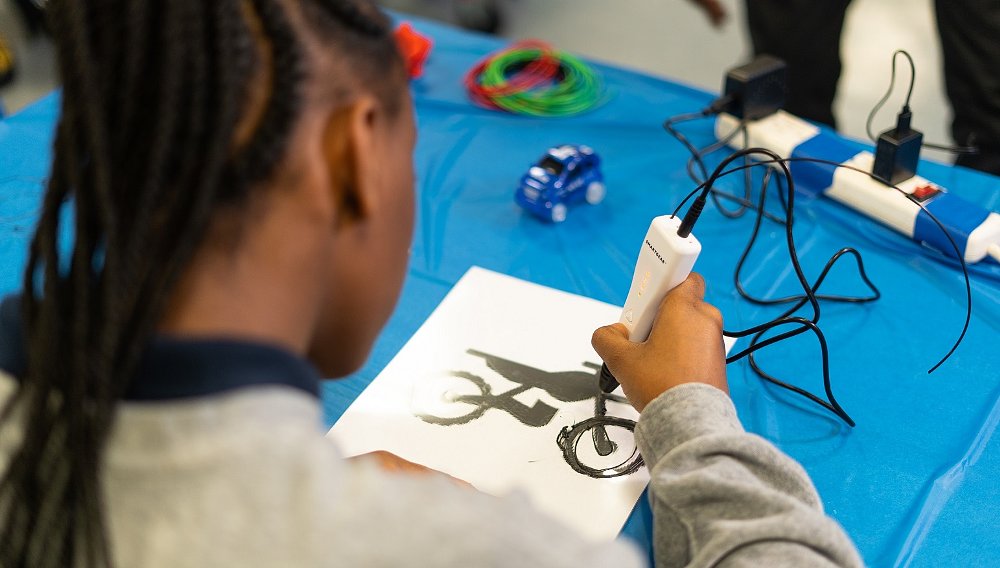On a sunny afternoon in July, I fired up my supermoto in the Bronx for a ride with Malissa Alexis and Starr10K — two of New York City’s female bike life devotees.
Donning half helmets and personalized jerseys, both kickstarted their dirt bikes to offer a view into the urban motorcycle scene they love. For this GenX-suburban dad, it was a ride like no other. The adventure served up wheelies, jumping sidewalks, lane-splitting taxis, dodging buses and evading the NYPD — all to the backdrop of cheers and jeers from onlookers under the Bronx’s elevated subway tracks.
Caution aside, I have to admit the ride was quite a rush. I came away respecting the skills of my guides — while pondering the pros and cons of young folks living and loving moto stunting in America’s big cities.
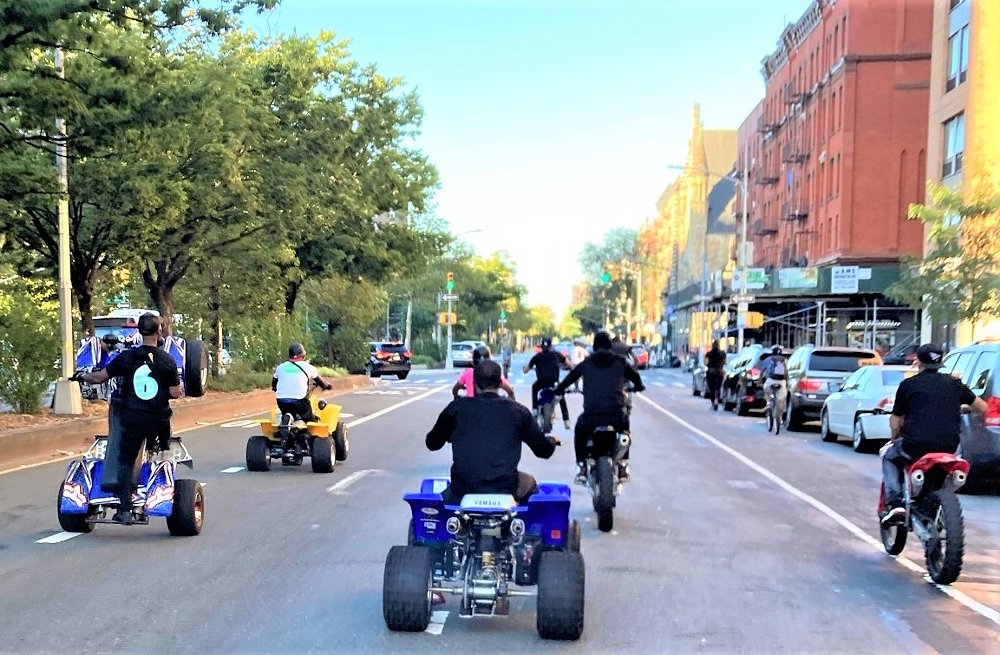
What is bike life?
Every few decades, some cultural trend within motorcycling captures the imagination (and ire) of the public. From Hollister in 1947 to "Hell's Angels '69," it was outlaw biker gangs. In the 1990s, it was freestyle motocross. Today's rebel motorcycle movement — the one earning a mix of fascination and detestation — is bike life.
So what the hell is bike life? If you haven’t heard the term, chances are you have seen news coverage or social media on its practitioners, commonly referred to by the news media as "illegal dirt-bike riders."
Before continuing, let me urge those who are ready to skip to comments to drop "they’re a menace" posts to keep reading. I encourage skeptics, city officials and motorcycle industry illuminati to hang with the story to the end. There's much more to this movement than a bunch of reckless kids doing wheelies.
In my appraisal, bike life is the title the social media generation has given to their version of motorcycling. One that revolves around crews riding, stunting and socializing on dirt bikes in their own distinctive way in America's cities.
"When you ride, what you do around your bike — your love of bikes, the freedom, the lifestyle — that's your life on a bike. That's bike life," said Malissa Alexis.
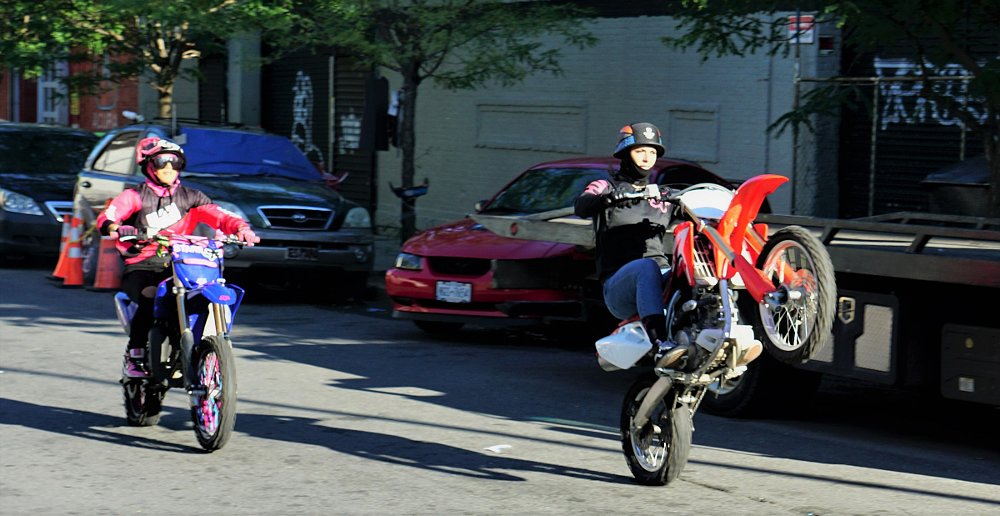
Harlem-based rider and Bikelife Sports founder Benjamin Charles, who goes by Benadon, offered his take. "It's about a bunch of people who come together for one particular thing — the life of a bike — and the love of that life we share riding bikes," he said.
Bike life has its own music and fashion preferences — hip hop, half helmets and high tops — and riding traits: slower speeds and dope wheelies. The movement is still largely off the grid and decentralized. As far as I’ve observed, bike life has an egalitarian flair. Anyone who shows up and makes the scene is welcome to join the ride. You won’t find an AMA event schedule or much industry support.
What you will find, however, is a plethora of bike life social media content across the world with millions upon millions of views. Bike lifers post clips from every major U.S. city — Philadelphia, Atlanta, Los Angeles — and globally, from Sweden to Germany to Ghana.
Bike life has also begun filtering into mainstream culture. The New York Times and Vice News cover it. Artists such as Meek Mill and Rihanna feature bike life in their videos and fashion shoots. In the movie "Creed," the Rocky franchise recreated the iconic Rocky run scene with dirt bikers riding past Michael B. Jordan. And more recently, bike life was central to the plot of the 2020 Sony Pictures film, "Charm City Kings" produced by Will Smith. The movie cast prominent Baltimore rider Chino Braxton riding a Yamaha YZ450F.
So yes, bike life has the public’s attention and curiosity.
Public enemy
And then it gets complicated. Beyond hip hop artists and celebrities toasting the movement, there are plenty of folks who have no love for bike life. Much of that stems from the inherent nuisance and dangers of packs of riders doing stunts on noisy motorcycles in congested cities. There’s also a tally of unfortunate incidents where bike lifers and/or citizens have been hurt or killed. City officials in NYC reported that motorcyclist deaths doubled from 2019 to 2020 and are on a similar pace in 2021, with most of them being unlicensed riders. Local news in New York, Philadelphia and Baltimore frequently covers these incidents in segments that frame riders in a negative light.
As such, NYC has all but declared bike life public enemy number one. The NYPD has created special units that track riders, tackle them off their bikes, chase them in unmarked cars and seize their rides.
In September, NYC Mayor Bill de Blasio and senior NYPD officials streamed a press conference where they called for zero tolerance for illegal motorcycles in front of bulldozers crushing seized dirt bikes.
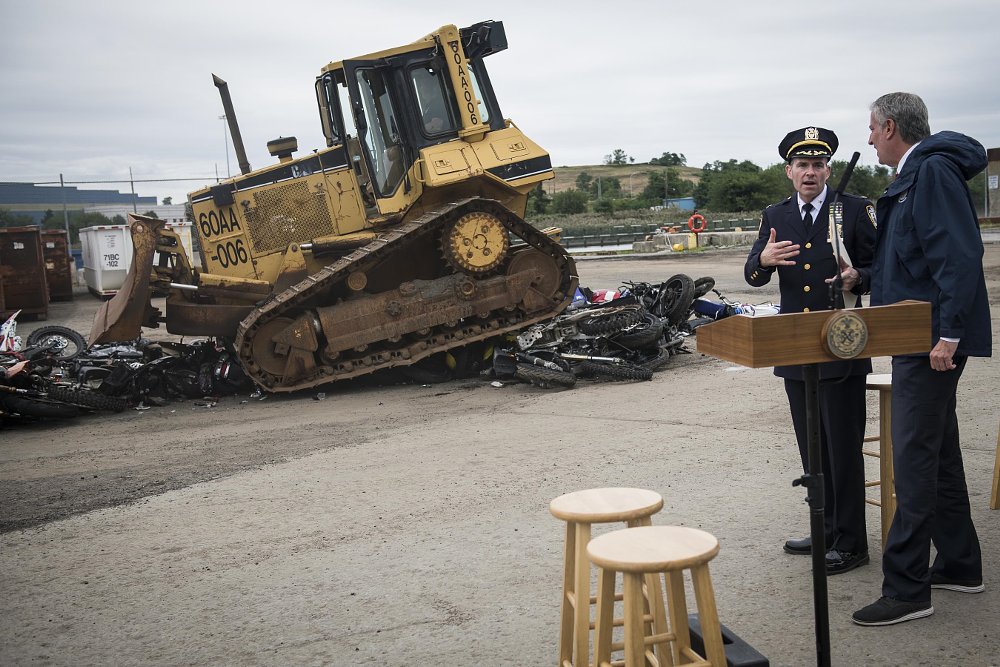
"There are some problems that are tough to overcome, but there are other[s]… you can smash and you can crush and this is one of them," the mayor said. (The NYPD, New York City Mayor’s Office, Manhattan Borough President did not respond to requests for comments for this article.)
Riding with bike life
It was against this backdrop — notably the NYPD bearing down on bike lifers as if they were Tony Montana — that I started riding with crews in NYC.
And from that exposure, I took away several observations. The first is that bike lifers absolutely love their bikes. When I first visited Malissa Alexis's home in the Bronx, she opened a garage stuffed with motorcycles. Using a skateboard as a mechanic's seat, she went right to work repairing a flat on her main ride, a Honda CRF150.
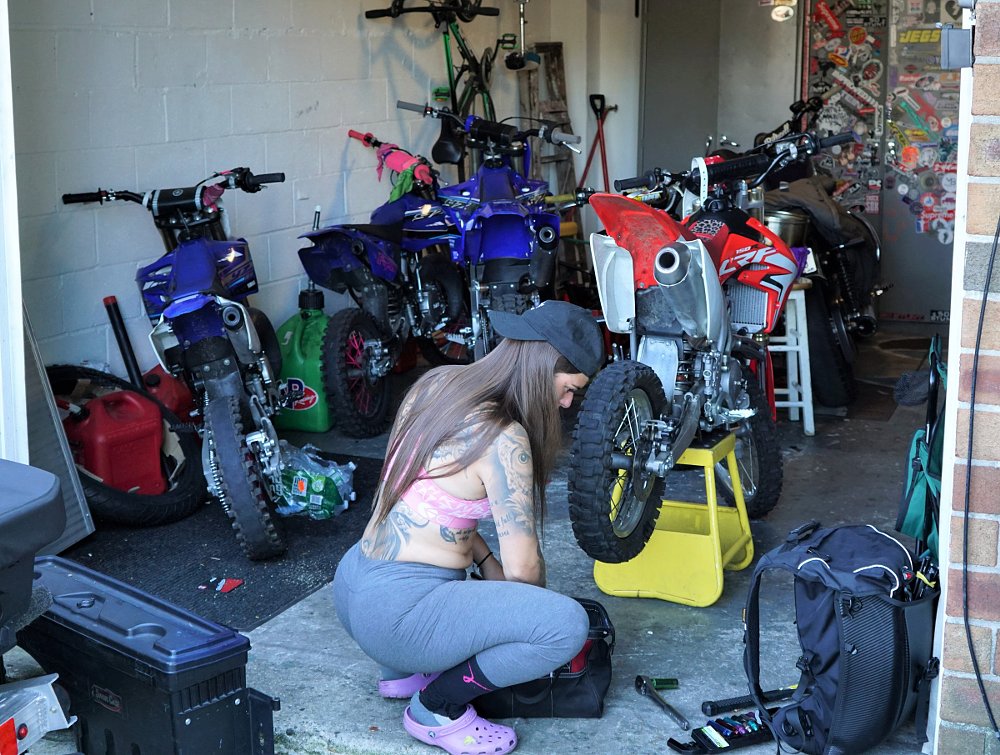
"This is also how I define bike life, putting the time in to maintain your bike," she told me. Alexis, a 20-something hairdresser who grew up riding quads and dirt bikes on Long Island, discovered bike life when she moved to the Bronx eight years ago. She simply showed up at informal meetups and started rolling with the pack.
"At first I was a little scared about riding in the streets but then I fell in love with it," she said. Alexis named the sense of freedom and the inclusiveness and camaraderie of the movement as big ups for her. She also explained that she felt instantly welcome as a female on a motorcycle in bike life.
"You could be rich, poor, Black, White, Arabic, Spanish… guy or girl — or a mix of them all. We don’t give a shit. You show up on a dirt bike, you're good in my book," she said.
Benadon explained that bike life and riding motorcycles serve as both escape and inspiration for a number of young people in NYC and other cities.
"Don’t forget this shit is bred in the slums. A lot of people in the bike life community have tough lives," he said. "Your mom and dad are struggling, street hustlers are trying to get to you. But the one thing we live for is riding our bikes."
As for those bikes, preferences have shifted over the years from sport bikes to supermotos to dirt bikes. That trend started with bigger 450s but has since seen riders moving to smaller engine machines.
"I can’t talk about other cities, but in my city, everyone wants a YZ125," Malissa Alexis said and Benadon named the same bike.
"Our bikes need to be agile for stunting, so that’s why folks have moved to the lighter bikes," he said. He dismissed any street-legal motorcycles, saying "they’re too clunky and the dual-sports look lame."
That brings me to my second observation from hanging with bike life: These riders have skills. It takes tenacity and talent to master and pull off tricks on a motorcycle in a congested concrete jungle like NYC. The stunt menu I observed included moves around donuts and stoppies. But the primo bike life act is the wheelie. In bike life, wheelies are a sublime language and the top riders are absolute masters of their vernacular.
With the minimum of space, Malissa Alexis can clutch and throttle her Honda up to balance point on a dime and hold it while navigating traffic, lifting her arm, kneeling on her seat and doing 360s. In Harlem, I saw a rider jump on a friend's YZ125 he’d never ridden and instantly wheelie uphill for three city blocks. Riders like Chino Braxton can hold wheelies for miles, while dancing on the seat, swaying the bike side to side and making full street turns.
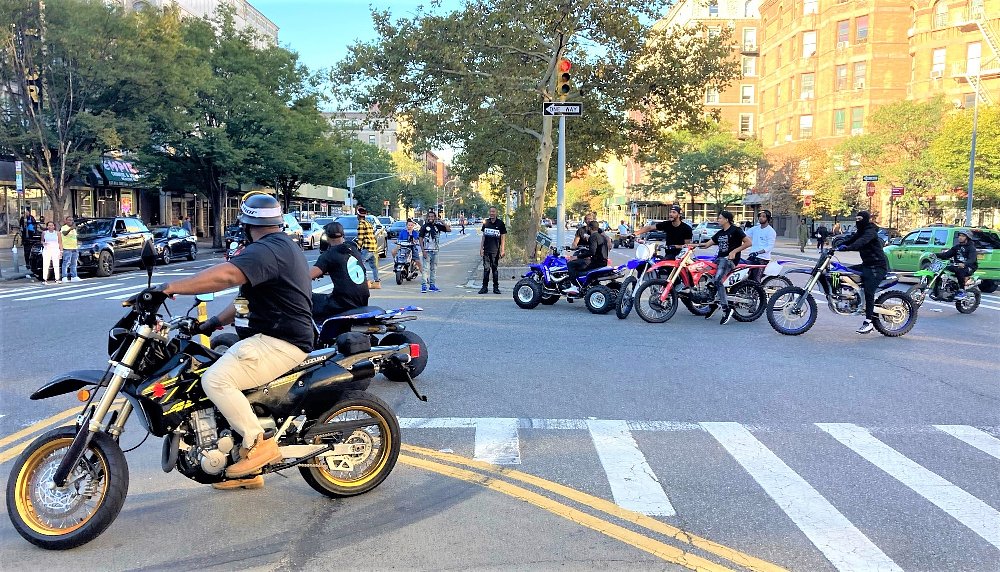
Liked, despised or overhyped
On my rides with bike life in NYC, I observed mixed reactions from the public. Most of it was positive, with a number of people cheering the crews, snapping photos and raising gripped hands to encourage wheelies. In other instances, folks looked genuinely annoyed or scared. While lane-splitting Bronx traffic with Malissa Alexis and crew, a couple drivers yelled at us derisively from their cars.
Bike life has also received mixed reactions from the motorcycling community. When JT Racing did a 2019 Instagram post on NYC's Leeky Da Bikestar, it created a troll storm of negative comments and debate. Many of the detractors criticized bike life as over-hyped and waded into tropes that were downright racist.
My main observation, though, was that bike life has a huge amount of heat on it. The weight of law enforcement on these riders is massive. When I first met with Benadon in Harlem, he took me to a secret basement location where he and friends hide their bikes and quads to guard them from seizure. Rolling them out onto the street, there was a foreboding sense of urgency to get our machines started and mobile. Several riders explained that the best bike lifers can always evade the police as long as they’re moving.
"Once you stop, that's when they can get you, tackle you, or ram you off your quad or bike," a member of the pack told me.
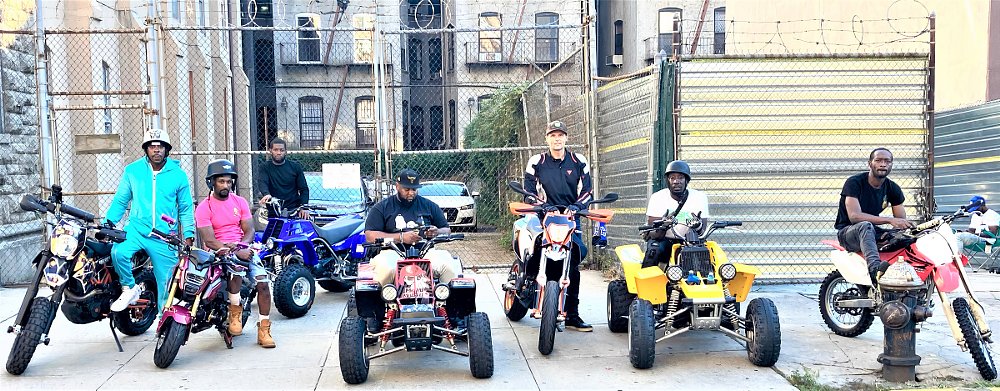
When I rode with Benadon's friends in Harlem in September, the crew deployed lookouts for gas stops while swiftly filling tanks. Each time I've ridden with bike life in NYC, the police have chased us. On a day out with Malissa Alexis and Starr10K, they quickly detected two squad cars tracking us so we pulled into a Bronx alleyway to hide behind an industrial warehouse.
This September, while riding with a pack in Harlem, the crew picked up on a pair of unmarked units pursuing us through traffic. Before I knew it, a blacked-out Ford Taurus descended on the group, accelerated through the middle and attempted to trap one of the quads between a parked car. The pack fled in three directions, leaving me there alone momentarily, with the police car on my tail.
According to Benadon, the NYPD seizure and crushing policy has created more incentive for bike lifers to flee. "You’re not gonna let a cop take from you what you love — your bike," he said. "You’re gonna try to save it."
I asked Benadon if he believes bike life in NYC is getting outsized attention from the police because many riders are Black. “Yes,” he responded resolutely, with an expression that connoted I’d asked the most obvious question in the world.
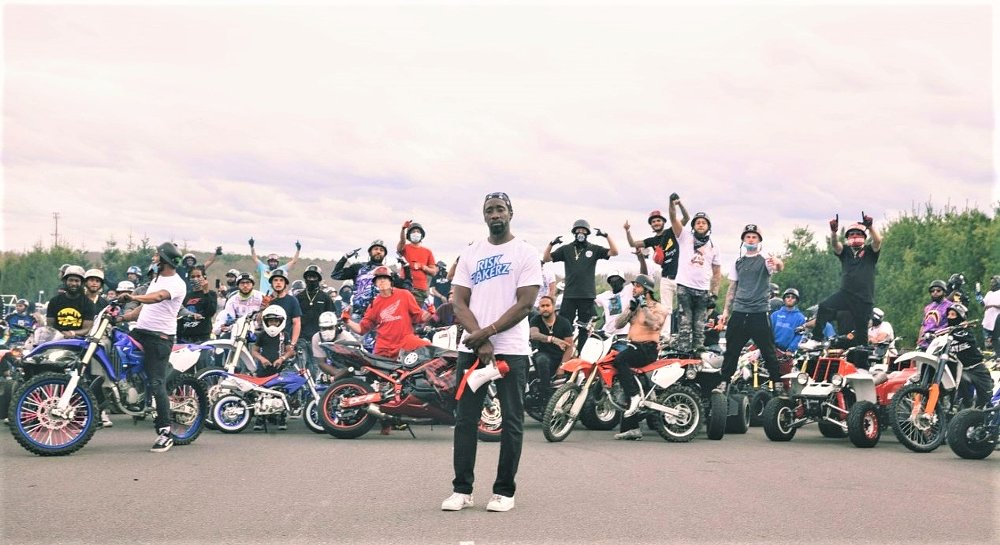
Safer and off the streets
Some are attempting to shift bike life to safer, controlled environments. Malissa Alexis bought a wheelie machine and created her own business, SafetyStunts, where she now teaches riders to master wheelies in parking lots, instead of down Broadway. Benadon has drawn down his street riding to found Bikelife Sports, an organization that hosts private track events across the country that draw up to 700 riders per outing. He’s also developing a competition format for bike life called wheelie racing, which he’s tested at New York Safety Track (a three-hour drive from NYC). But even Benadon himself believes his events may only have marginal impact.
"There’s only so much one person can do," he said. "I can't possibly organize enough events with the little money I have to make this thing change. And no one's coming to say 'Let me help you by putting some money behind this' so we could do it every weekend."
There is potential here. Bike life is a youthful movement with a a gargantuan social media presence. There’s a strong possibility that it represents a deeper cultural trend in global youth sports with implications for motorcycle development, fashion apparel, consumer goods marketing and motorsports. Let’s not forget that skateboarding, freestyle motocross and snowboarding were all largely dismissed and derided but eventually went mainstream and helped build the multi-billion-dollar extreme sports sector.
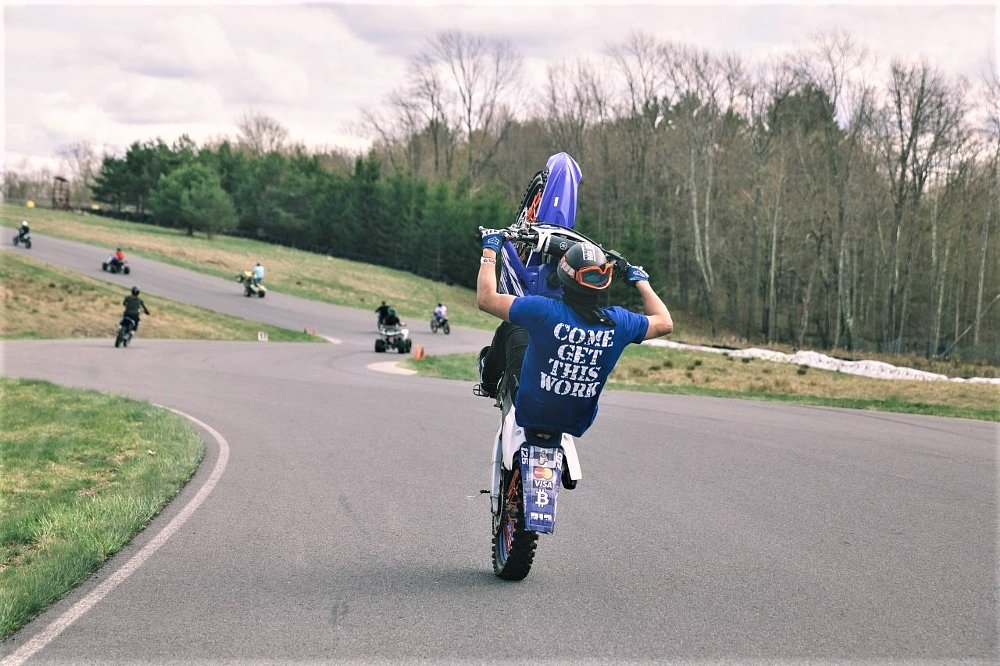
Bikelife Sports founder Benadon hopes to move in that direction and says he’ll continue to develop his wheelie racing series and closed-course outings, with or without sponsors, but he does ponder the possibilities with financial backing.
"We had over 700 people — families, kids on mini-bikes, riders from Harlem — travel to farm country in the middle of upstate New York for our last event. With that kind of enthusiasm, imagine where bike life as a sport could go with some support."
Word to the street: suggestions, solutions
After researching bike life and riding with crews in NYC, I’ve come away with some views and suggestions for movement, public officials and the motorcycle industry.
Here goes. Even with its complications, I believe bike life is misunderstood and grossly undervalued. Its devotees, by and large, are not criminals and they definitely have legitimate talents as riders.
For the police and policy makers in NYC (and beyond): You can't smash or crush bike life out of existence, regardless of what the mayor says. I understand there needs to be enforcement for the most egregious riders and reckless behavior. But for the most part, this movement is about young people who are willing to risk quite a lot, even their lives, for an activity they love: riding motorcycles.
So my suggestion to the police and politicians in cities like NYC is to engage respected figures in bike life. Talk to them about protocols to make it safer and how to create controlled parks in and around New York for them to ride. In the 1990s, city officials first gave skateboarders hundreds of reasons why it couldn’t be done, but now kids go to public skate parks in cities across America like it's Little League.
For the motorcycle and accompanying industries: Find ways to engage bike life if you want to expand your demographic and remain relevant with a younger generation. For years now I’ve heard the moto industry moaning about the waning U.S. youth market for motorcycles and the need to appeal to a broader universe. Bike life brings youth, passion and diversity, just what the industry needs. But the industry has mostly shied away from any association.
For this story, I aimed to verify any sponsorships or direct engagement by corporate actors with bike life but found almost none. One group that has taken note of the potential of bike life is Jay-Z's entertainment company Roc Nation, which confirmed that Chino Braxton is under management. It appears Supercross may have recognized the marketing power of bike life riders, such as Braxton, who has more Instagram followers than Supercross Champ Eli Tomac. He's been invited to races and was interviewed during a 2021 NBCSN broadcast.
"We are all connected by our love of dirt bikes and riding," Supercross Senior Director Dave Prater replied via e-mail when asked about any SX plans to work with bike life personalities. "We'd love to see more off-road riding areas available in or near metropolitan areas, where riders can enjoy their love of riding responsibly."
Given the talent shown by some riders, providing riding areas could also feed into professional racing series, a reason for the AMA to get involved with bike life groups. If young riders can obtain dirt bikes, learn motorcycle stunts and do tricks in the middle of Harlem, with the police chasing them, they could, with the right support, build the skills to become stars in MotoAmerica, American Flat Track or Monster Energy Supercross.
Finally, for the bike life movement itself: You definitely have something authentic that's captured the imagination of the public, a younger generation and has immense untapped value. Less confrontation with citizens and law enforcement would make bike life not only safer, but also harder to dislike. Several riders talked to me about encouraging basic rider protocols, like not taunting the police, riding on sidewalks, or doing high-gear wheelies. Legalizing the dirt bikes with aftermarket kits, where possible, would shift confrontations with law enforcement from the current seize-and-crush game to simple traffic citations.
Bike life could also take some tips from freestyle motocross, which elevated its edgy movement out of amateur VHS tapes and the deserts of Southern California to ESPN and the X-Games. Bikelife Sports founder Benadon hopes to move in that direction with his wheelie racing series and closed-course outings.
Movies and celebrities have tapped into bike life's popularity and many politicians and police have vilified the riders and stoked public fears. Still, few, especially in the motorcycle industry, have really tried to understand the phenomenon. In the end, bike life riders have the same motivation as the rest of us: We love to ride motorcycles. There should be a way to turn that into something positive for motorcycling while making motorcycling something positive for a younger generation.











